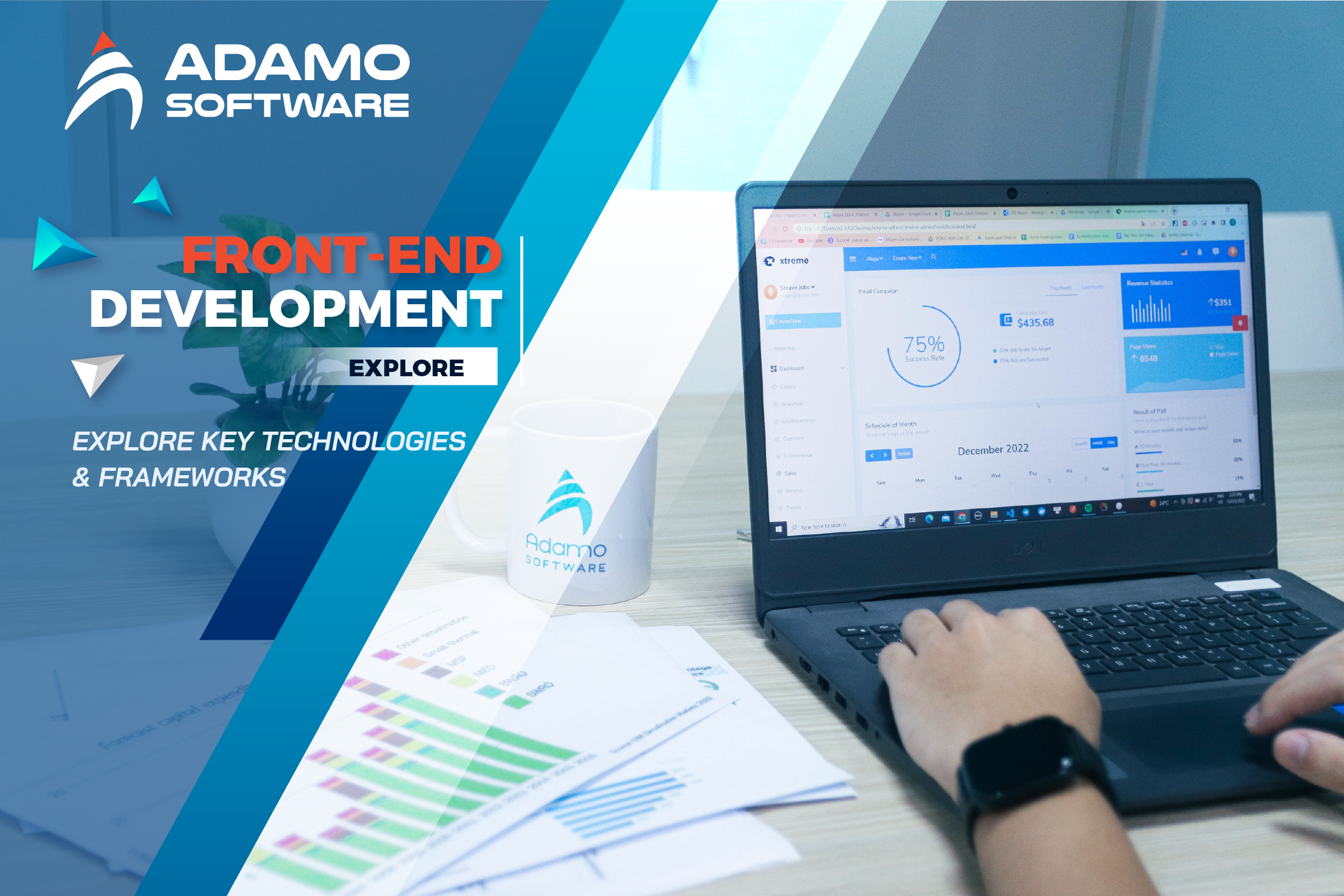Low-code Development Platform: 7 considerations to select and build

A low-code development platform has tremendous potential, but their capabilities vary significantly. Take the time to consider your options.
Did you realize that the low-code market has grown by 23% and generated $11.3 billion in revenue since last year? According to analysts at Gartner, the market will expand by $13.8 billion this year. In the next 5 years, it could even reach $30 billion.
In a nutshell, low-code development platforms and their enterprise utilization are currently flourishing. They can facilitate the delivery of various applications by dedicated development teams or software developers.
I. What is low-code platform?
More than 99% of business stakeholders and IT professionals acknowledge that low-code platforms can benefit their organization.
A low-code development platform typically refers to an application that can provide a Graphical User Interface for IT programming. It generates code more quickly, thereby reducing traditional programming efforts. In addition, the tools reduce the amount of manual coding, which contributes to the code’s rapid development and cost-effectiveness.
That low-code development platform facilitates effective coding, rapid setup, management, and deployment. For example, Appian is a low-code development platform that enables software developers to create custom applications in a straightforward environment. The Appian platform provides a wide range of capabilities out of the box.
II. Low-code vs traditional development: Quick comparison
| Property | Low-code development | Traditional development |
| Definition | Low-code development is the process of making software products with a graphical user interface. This is also known as “visual modeling.” | Traditional development is the process of creating software applications using hand-written code. |
| Coding knowledge | Minimum proficiency required. Low-code developers require fundamental coding skills. | Professional web developers with sophisticated coding skills and knowledge of multiple web frameworks create traditional web applications. |
| Speed of development | Rapid development is a hallmark of low-code development platforms (LCDP). You can develop a functional web app in just 1-3 weeks. | Traditional development requires intensive coding and could take between 2 and 8 months to complete. Performance-wise, however, tradition is superior. |
| Customization | With low-code development platforms, you can customize your web application to a limited extent. | With conventional coding, the web application can be modified to suit your specific needs. |
III. Why low-code? What are the benefits of low-code development?
Low-code adds value to your organization by: 1) allowing non-technical employees to create their apps, or 2) simplifying the development process for programmers by reducing repetitive and non-value-added tasks.
If you’re still unsure why you should choose rapid application development, consider the following advantages:
_ Enhanced agility
_ Increased productivity
_ Adaptability
_ Reduced operational and construction costs
_ Effective risk management
_ More rapid transformation
A recent study by Frevvo examined the options for low-code development platforms and reached several conclusions. It was discovered that they accelerate digital transformation by 70% and reduce dependence on technical abilities by 40%.
You can read more here to explore other web application development services from low-code platform, back-end, front-end, devOps consulting services to progressive web application.
IV. How to choose low-code platform?

1. Identify use cases of low-code development platform
Low-code and no-code capabilities have grown in popularity over the past few years, particularly in 20202, when many businesses had to hastily develop and upgrade their apps due to Covid-19. Similar to many other technology categories, there are likely to be numerous low-code options with varying capabilities and development strategies.
Low-code development platforms should assist your organization in accelerating app development and simplifying support for enhancements. However, this must be weighed against the types of apps you desire in terms of end-user experiences, data demands, workflow capabilities, and other factors.
When researching and testing low-code development platforms, it is crucial to consider multiple app development requirements and use cases. Find out what the platform cannot do or cannot do readily, as well as its scope, its strengths, and its weaknesses. Selecting a low-code development platform because it functions well for a single use case is no guarantee that it is the optimal standard for ongoing requirements.
Also read: Top 12 platforms to deploy web applications
2. Specify who will develop applications
Some low-code development platforms identify themselves as minimal code, indicating that application development may require some coding expertise. Others market themselves as no-code platforms and provide visual tools for building user interfaces, workflows, and integrations.
Identifying who will design, develop, and maintain the apps is an even more crucial aspect. Some low-code development platforms are tools for technologists and target individuals with software development skills. Others are citizen development platforms that give business analysts or subject matter experts the ability to develop and support applications. Several platforms support both options but offer distinct tools and capabilities for each user type.
The target developers should be enthusiastic about learning the platform, building applications, and supporting ongoing enhancements. Engaging them early in the selection process ensures that they are on board with utilizing the tool to support organizational objectives.
3. Research customer satisfaction
It is difficult to get people to discuss platforms that have fallen short of expectations, whereas it is simple to discover hundreds of positive reviews for every technology platform. Some low-code development platforms will promote their number of apps, consumers, and developers, whereas the superior ones will provide customer satisfaction statistics. The larger, more established, “enterprise-ready” platforms are likely to appear in analyst reports such as Gartner Magic Quadrants, Forrester Waves, and others.
To have an excellent low-code development platform, a company must excel at delivering exceptional end-user experiences, impress technologists with its capabilities, and demonstrate both short-term and long-term value to executives. Some low-code development platforms may be inadequate at attracting one of these personas, making it challenging to achieve repeatable success with their technologies.
4. Define usage requirements and estimate pricing
Low-code development platforms have vastly distinct pricing and business models. Some have end-user pricing, in which case you pay more for increased application usage or user count. Other companies determine the cost of their platforms based on the number of applications or development seats. Some offer multiple products that are sold separately, and the majority have pricing tiers based on capability.
Therefore, although many offer simple access to trials and proofs of concept development, it is essential to comprehend the end-state development and production requirements.
Additionally, avoid evaluating low-code development platforms based solely on price. Ultimately, these platforms must facilitate pleasurable experiences, productive development, and robust operational capabilities. When calculating the total cost of ownership, you must take into account all financial factors.
5. Investigate and rank requirements for integration
Developing low-code applications in isolation is unaffordable. Integration with enterprise systems, APIs, cloud and data center databases, and third-party data sources is necessary for applications. Developing IoT data pipelines or machine learning models is likely to necessitate integration with low-code development platforms.
Almost all platforms provide APIs, but their capabilities, performance, and vendor support for development teams differ considerably. You should avoid developing low-code apps with complex integrations that require continual maintenance.
6. DevOps review and governance options
Once, low-code was synonymous with SaaS and cloud hosting options, and few offered hybrid cloud and data center alternatives. This is no longer the case, as low-code development platforms now compete based on their hosting flexibility.
Reviewing DevOps options is another crucial factor to consider. Not all low-code development platforms have the same DevOps capabilities, particularly in the following areas:
_ Application versioning and integration with a version control system.
_ Providing support for the development life cycle in the development, test, and other environments.
_ Enabling an agile development process with connections to backlog and roadmap management tools.
_ Integrating with continuous integration/ deployment, testing, or change management processes for IT service management.
_ Supporting disaster recovery and data science by enabling data snapshots, mirrors, replications, and extract, transform, and load processes.
Do not expect low-code development platforms to have the same DevOps flexibility as Java, .NET, or JavaScript. As the objective of adopting a low-code development platform is to simplify the necessary app development and operations infrastructure, there are trade-offs involved. The question is whether they satisfy business and technical requirements, not whether they conform to coding and software development tools and processes.
Examine the platform’s governance options for citizen development if you intend to enable business unit personnel to develop and support applications.
7. Understand compliance and security requirements
It is essential to evaluate platforms in the correct order. Do not mistakenly believe that compliance and security are the least essential concerns. Determining what is a must versus a should and when to evaluate various criteria is part of the art and science of assessing platforms.
If you’re developing applications that require HIPAA compliance, data lineage capabilities, auditing capabilities, data sovereignty compliance, active directory integrations, hosting constraints, or other non-negotiables, you should evaluate these requirements as early as possible.
Then, when you begin implementing applications, you will need to comprehend how the low-code development platform handles role-based administration, data masking, and other security concerns.
IV. Why Hire Adamo Team to Build with Low-Code Development Platform
As a premier web application development company in Vietnam, Adamo Software is here to help you transform complex business ideas to life related to web application development services. Overall, a low-code development platform enables developers and non-technical users to produce or design applications at a lower cost. They can also produce these apps more quickly than traditional programming. However, there is no one-size-fits-all product. It is crucial to select the optimal low-code development platforms for your organization based on your unique requirements for use case coverage, developer profiles, integrations, DevOps, and cost models.
You can read more about what is the difference? website vs. web application.
F.A.Q Related to Low-Code Development Platform
1. What is low-code good for?
Low-code platform helps accelerate and remove the complicated parts of software development using different visuals and automations. Hence, it helps firms overcome many challenges of traditional software development.
From many case studies, the most innovative low-code platforms can be utilized to development custom applications and use cases such as web portals, employee experience apps, and APIs exposed to legacy systems.
2. Is low-code development platform hard to build?
Low-code typically has a flat learning curve. However, the level of difficulty will differ from platform to platform. The ones aimed for business users, which are commonly connected with no-code, are simpler to use but lack the capabilities to expand beyond basic functions. Those aimed at professional developers typically necessitate some development skills as well as a technical background.
Nonetheless, any low-code platform is less difficult to learn and use than traditional development tools and languages. When assessing low-code platforms, keep in mind that it is critical that the solution incorporates both personas and supports business and IT collaboration.
3. Will low-code development platform application replace developers in the future?
No, low-code will not replace developers. Instead, consider low-code to be a supplement to traditional development.
4. Will we do cloud-based development with low-code development platform?
The most sophisticated low-code platforms allow you to deploy applications on-premises or in the cloud (public, hybrid, or private). Low-code is also capable of supporting whole cloud journeys. According to a recent IDC study, the higher the cloud maturity level, the greater the number of net-new apps generated in low-code.
However, while considering cloud development, you must consider few more things than simply running programs in the cloud. And here is where multiple low-code platforms come into play.











